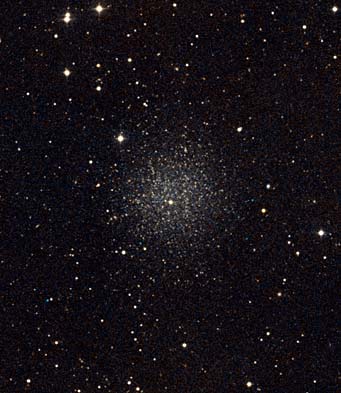

W. M. Keck Observatory, Mauna Kea, Hawaii (September 12, 2007)
Mauna Kea scientists may have solved a discrepancy between the number of extremely small,
faint galaxies predicted to exist near the Milky Way and the number actually observed.
In an attempt to resolve the "Missing Dwarf Galaxy" problem,
two astronomers used the W. M. Keck Observatory to study a population of the darkest, most lightweight galaxies known,
each containing 99% dark matter.
The findings suggest the "Missing Dwarf Galaxy" problem is not as severe as previously thought,
and may have been solved completely.
"It seems that very small, ultra-faint galaxies are far more plentiful than we thought", said Dr. Marla Geha, co-author of the study and a Plaskett Research Fellow at the Herzberg Institute of Astrophysics in Canada. "If you asked me last year whether galaxies this small and this dark existed, I would have said no. I’m astonished that so many tiny, dark matter-dominated galaxies have now been discovered."
The Missing Dwarf Galaxy puzzle comes from a prediction of the "Cold Dark Matter" model,
which explains the growth and evolution of the universe.
It predicts large galaxies like the Milky Way
should be surrounded by a swarm of up to several hundred smaller galaxies known as "dwarf galaxies".
However, until recently, only 11 such companions were known to be orbiting the Milky Way.
To explain this large discrepancy,
theorists suggested that while hundreds of dwarf galaxies near the Milky Way may indeed exist,
the majority might have few, if any, stars.
If so, the galaxies would be comprised almost entirely of dark matter
— a mysterious type of matter that has gravitational effects on ordinary atoms, but which does not produce any light.
But proving the existence of a large number of nearly invisible galaxies seemed problematic, until now.
Dr. Josh Simon, a Millikan Postdoctoral Scholar at the California Institute of Technology, and Dr. Geha,
used the 10-meter Keck II telescope with the DEIMOS spectrograph
to conduct follow-up studies of eight new dwarf galaxies first discovered with the Sloan Digital Sky Survey.
The results enabled the duo to calculate precisely the total mass of each galaxy.
To their surprise, each system was among the smallest ever measured, more than 10,000 times smaller than the Milky Way.
"The formation of such small galaxies is not very well understood from a theoretical perspective", said Dr. Simon.
"Explaining how stars form inside these remarkably tiny galaxies is difficult,
and so it is hard to predict exactly how many dwarfs we should find near the Milky Way.
Our work narrows the gap between the Cold Dark Matter theory and observations
by significantly increasing the number of Milky Way dwarf galaxies
and telling us more about the properties of these galaxies.
We also now know that dwarf galaxies can be even smaller than we thought possible".
Numerous, repeated measurements of 814 stars in the eight dwarf galaxies were obtained at W. M. Keck Observatory.
The stars were found to be moving much slower than stars in any other known galaxy (about 4 to 7 Km/sec.)
For comparison, the Sun orbits the center of the Milky Way at a speed of about 220 Km/sec.
In all, the astronomers measured precise speeds for 18 to 214 stars in each galaxy,
about three times more stars per galaxy than any previous study.
The original, complete version of this article is available at the Web server of the
W. M. Keck Observatory.
It includes a map (direct link at left)
of the distribution of newly discovered dwarf galaxies orbiting the Milky Way.
Main image credit (Leo II galaxy):
Finding the Missing Dwarf Galaxies:
Some dwarf galaxies are much brighter and richer in ordinary matter than others.
Leo II, discovered in 1950, is in range of amateur sky imagers.
Digitized Sky Survey / Sean Walker
From Sky and Telescope
![]() This page was updated in: September 15 '07
This page was updated in: September 15 '07
Best seen with MS Internet Explorer.
Back: Gallery: Dark, but Light: Smallest Galaxies Ever Seen Solve a Big Problem
Messages: